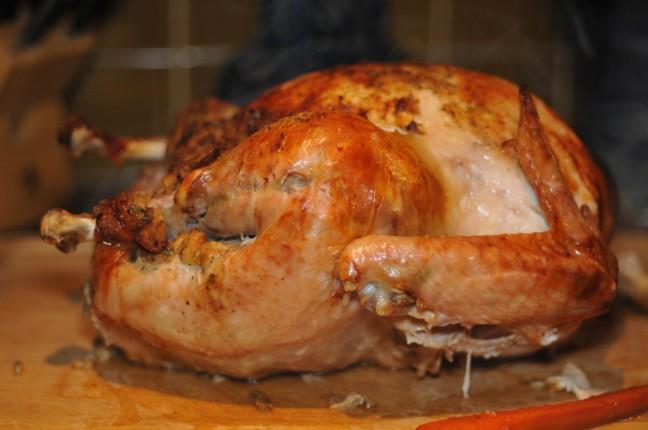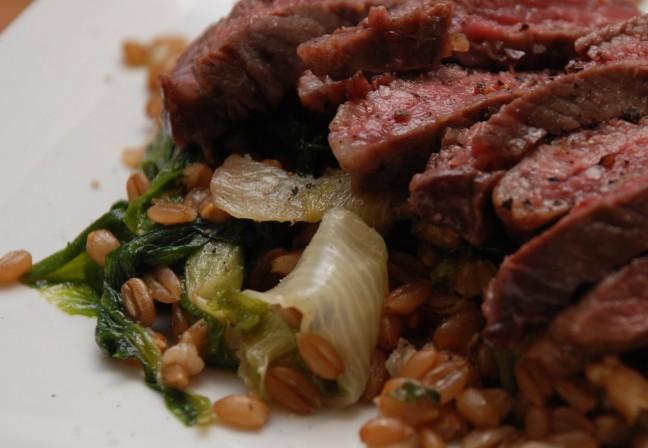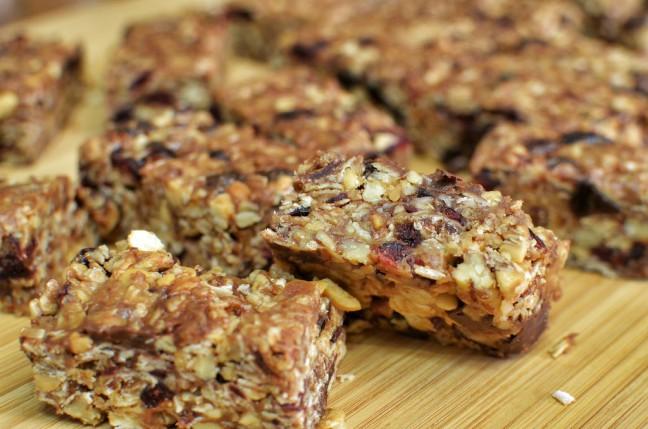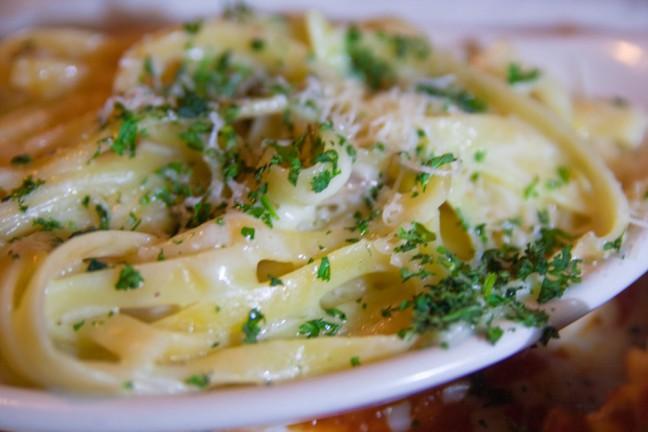Next Thursday, many of us will gather around the table and give thanks with our loved ones. We’ll watch the Macy’s Thanksgiving Day Parade and nosh on family favorites to kick off the holiday season. It all starts with a seemingly innocent feast in November and usually ends with a renewed promise to go to the gym in January. It’s a vicious cycle, and it happens every year.
On average, Americans chow down on between 3,000 to 5,000 calories on Thanksgiving Day. That’s more than double an entire day’s worth of calories for some well-off people. Splurging once a year may not seem so bad, but Thanksgiving is just the beginning. By the time we’re ringing in the New Year, most of us have packed on at least one extra pound, and many of us keep it, every year.
It’s time to break that vicious cycle. By practicing sensible eating habits this Thanksgiving, we can set the pace for a better holiday season. We can use our New Year’s resolutions to improve on something else. This year, let’s celebrate the holidays and our commitment to health. Read on for six tips for healthier holiday feasting.
Eat breakfast
Skipping breakfast will leave your body feeling empty and hungry, causing you to overeat at the family dinner. Start out the day with a satisfying meal full of protein and fiber to help keep your appetite in check. It doesn’t have to be anything fancy — save that for the feast. Try some whole-wheat toast with peanut butter or a fruit smoothie made with low-fat yogurt. Sitting down to a healthy meal first thing in the morning will reinforce healthy choices throughout the rest of day.
Earn it
Before the celebrations begin, head outside or hit up the gym for a quick workout. A brisk walk, a light jog or even tossing around the football will do the trick — anything to get your heart rate up.
Looking for something a little more festive? Start a new tradition and recruit your family to take part in a holiday fun run which most cities now offer. Burning extra calories beforehand will help make room for all that turkey and stuffing later on.
Portion control
Yes, it’s Thanksgiving, but that doesn’t mean you have to go overboard. Before you fill your plate, scope out the selection. Take note of the must-haves — like Grandma’s famous garlic mashed potatoes — as well as what you’re willing to skip. Load up your plate with any fruits and vegetables first, which have plenty of fiber to keep you full. A serving of turkey should be about the size of a deck of cards, mashed potatoes the size of a tennis ball, stuffing the size of an ice cream scoop and cranberry sauce the size of a golf ball. Pre-portioned desserts will also help to control calories. See this week’s recipe for individual mini pumpkin pies.
Make simple swaps
Extra toppings like butter, sour cream and gravy can really up to a significant amount of unnecessary calories, not to mention the extra grams of fat. If you indulge in extra toppings, keep them to a minimum. Otherwise use herbs and spices to enhance the flavor. Try finding a healthier alternative. Substituting something like plain Greek yogurt for sour cream will cut down on fat while boosting your protein intake.
Offering to help prepare the meal will allow you to make other substitutions during the cooking process. Try swapping quinoa or wild rice stuffing for bread stuffing or using natural cranberries instead of canned.
Slow down
Take time to savor your meal. After all, Thanksgiving comes just once a year. Instead of rushing through dinner, set down your fork and take sips of water in between bites. Listen to your body when it tells you it’s full. You could save hundreds of calories by slowing down and skipping that second trip down the buffet line.
Before you head for the dessert table, volunteer to help clean up or invite a few family members to go for another walk. Moving around will keep you from going back for more food and it will help get the digestion process going, making more room for pumpkin pie.
Don’t beat yourself up
At the end of the day, we’re all human and we all make mistakes. If you overdo it on Thanksgiving, it’s not the end of the world. Realize where there is room for improvement and be conscious of it moving forward. Instead of cramming all of these changes into one holiday, work on incorporating them into your day-to-day life. Every small step adds up and over time they’ll become second nature.
While we all look forward to the bounty of food, don’t lose sight of what’s important this Thanksgiving. Give thanks for your family and friends and the time spent together. Start new traditions while cherishing the old. Keeping the focus on family and not food will help everyone you celebrate with have a happy, healthy holiday season.
Thanksgiving just isn’t the same without pumpkin pie. This week’s recipe allows you to enjoy dessert without the guilt. Individual servings help to control portion sizes while the pumpkin offers an array of vitamins and minerals.
Perfectly Portioned Pumpkin Pie
Ingredients
- 6 mini graham cracker crusts
- 1 cup pure pumpkin
- ½ cup low-fat milk (can be substituted with almond or soy milk)
- 1 egg
- 1 egg white
- 1/3 cup pure maple syrup
- ¾ teaspoon cinnamon
- 1/8 teaspoon nutmeg
- 1/8 teaspoon ginger
- Pinch of salt
- Whipped cream for topping (optional)
Directions
Preheat oven to 375 F. Place the individual crusts on a baking sheet.
Whisk together the rest of the ingredients in a large bowl until smooth. Divide the filling between the crusts, which will be very full.
Bake mini pies for 25 minutes. To test, insert a knife into the center of a pie. Pies are done when the knife comes out clean.
Allow pies to cool. Garnish with whip cream before serving.
Makes 6 servings.














